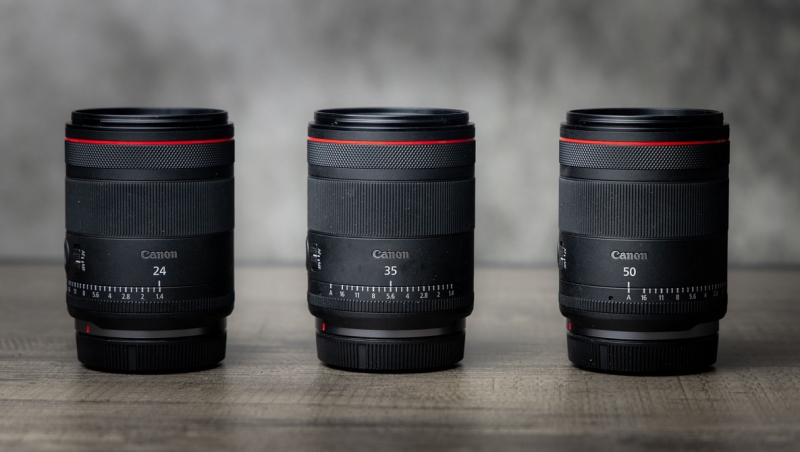Contents
Canon has released a set of lenses that carry the abbreviation VCM, short for Voice Coil Motor, a fast and silent autofocus system. The first three primes of this series are the RF 24mm f/1.4L VCM, the RF 35mm f/1.4L VCM, and the RF 50mm f/1.4L VCM. Let’s have a look.
The first lens with a Voice Coil Motor is the RF 24-105mm f/2.8L VCM. It’s a large lens, similar to the RF 70-200mm f/2.8L VCM. Both are similar in size and feature a built-in zoom mechanism. I reviewed the RF 24-105mm f/2.8L VCM when it was released.
Canon has added three primes to this new series of VCM lenses, and the fourth is on its way as we speak. The lenses I received from Canon Nederland were the 24mm, 35mm, and the 50mm. All lenses have the same maximum aperture of f/1.4 and feature a dedicated aperture ring.
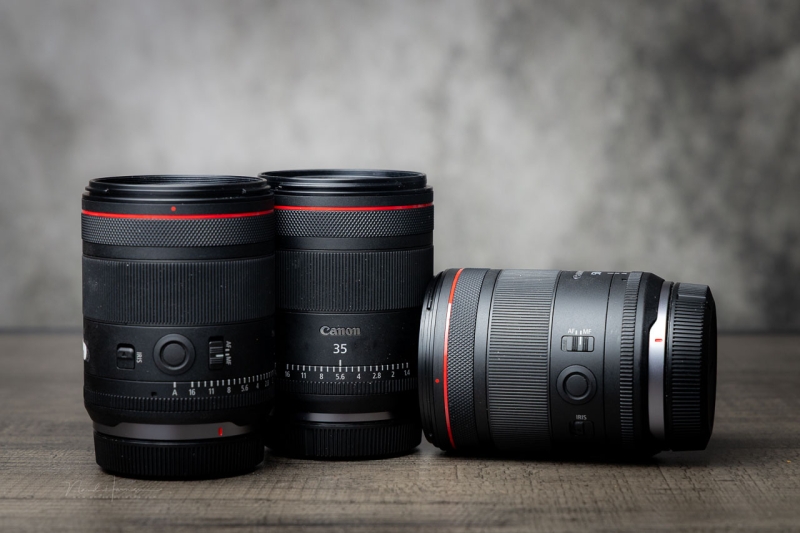
The first three VCM prime lenses by Canon.
These VCM lenses are targeted at video, with a silent autofocus that works with a combination of the Nano Ultra Sonic Motor for floating focus and the Voice Coil Motor for the rear focus. The aperture ring is without clicks and works in increments of 1/32 stop for a smooth transition in exposure.
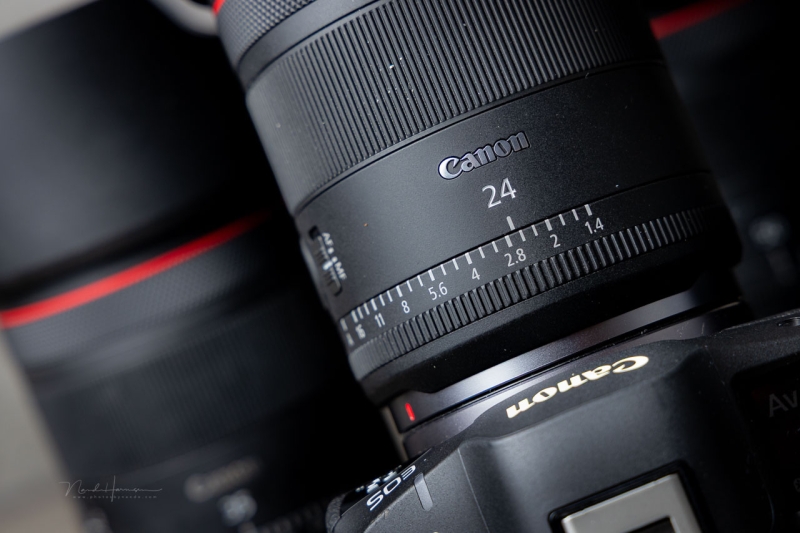
The aperture ring is stepless.
The RF 24mm f/1.4L VCM, RF 35mm f/1.4L VCM, and RF 50mm f/1.4L VCM have the same size and weight. This allows for fast lens changing without the need to rebalance a gimbal with each change. The filter diameter is also the same, which is convenient when using variable neutral density filters.
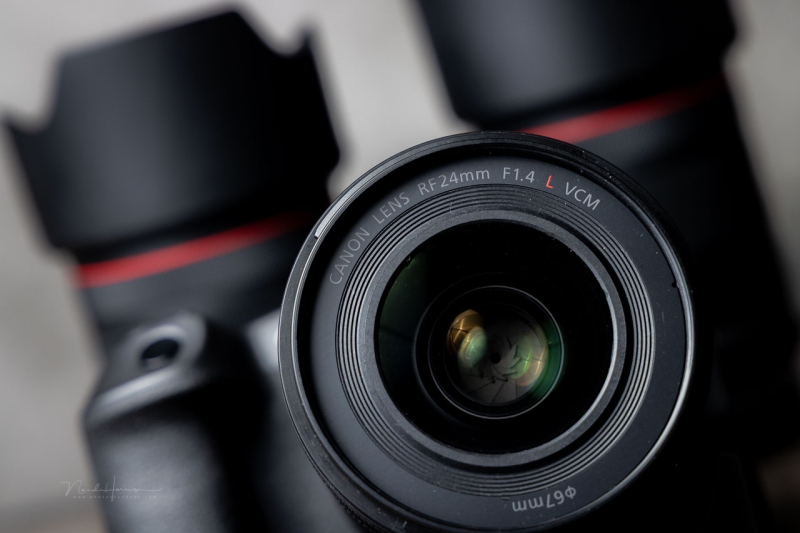
Everything is exactly the same—the filter diameter as well, which is a reasonable 67mm.
The lenses have a wide and smooth electronic focusing ring, the well-known control ring, and a focus switch. There is a programmable button and a spring-loaded iris-lock switch. You have to rely on in-body image stabilization since these lenses have no built-in stabilization system.
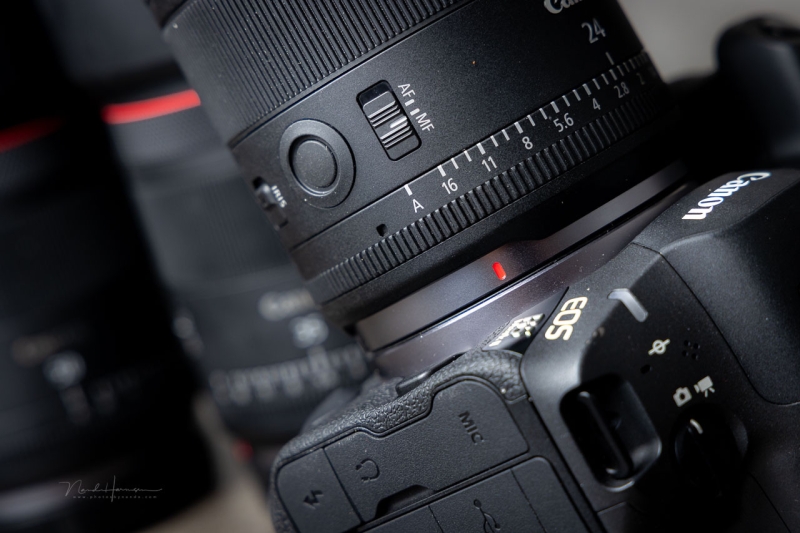
Every lens in this VCM series has a focus switch, an iris lock, and a button that can be programmed to your liking, but within limits.
Mandatory Image Correction
Similar to many modern lenses from various manufacturers, these VCM primes rely heavily on in-camera lens correction. Without the lens correction enabled, the performance appears to be weak. Especially the RF 24mm f/1.4L VCM has the strongest vignetting and barrel distortion of the three, closely followed by the RF 35mm f/1.4L VCM.
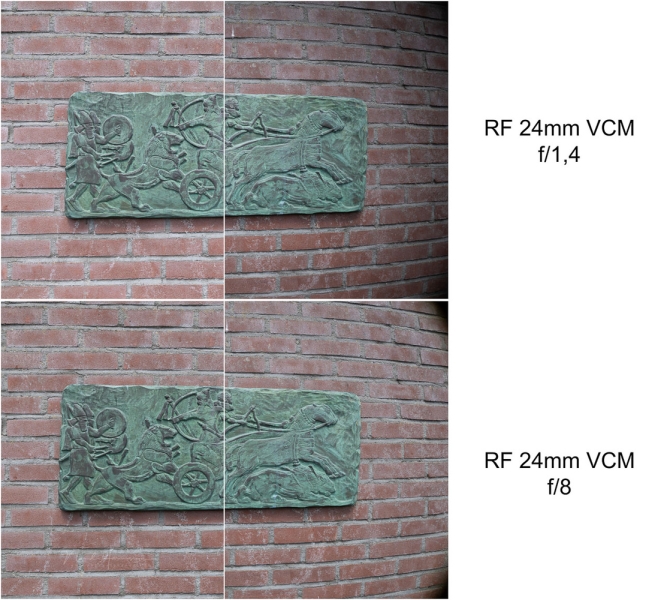
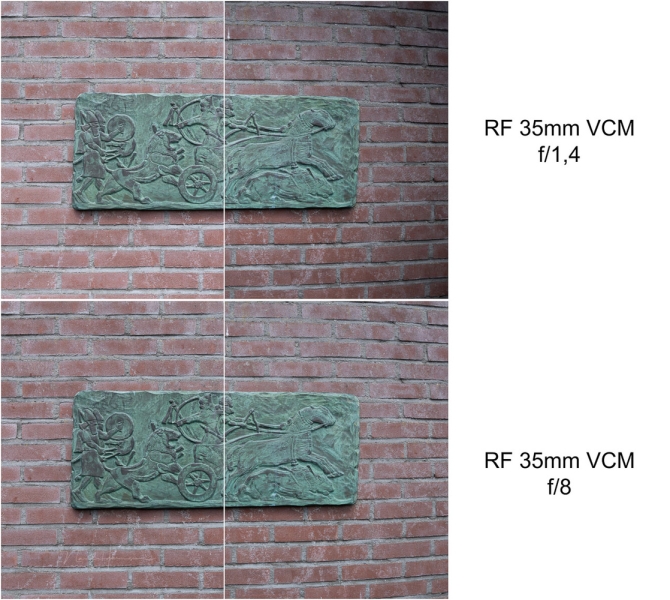
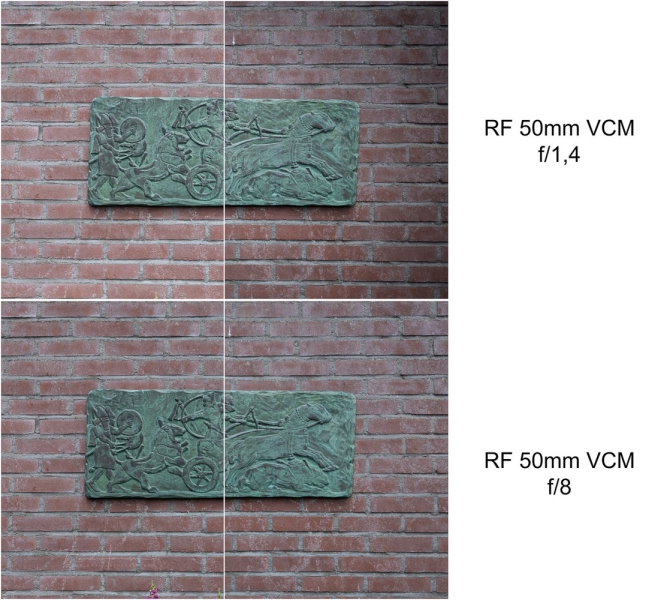
Closing the aperture to f/8 improves things significantly, but it is still mandatory to apply lens correction. Canon promises the best possible image quality thanks to the design optimized for high-resolution imaging and claims it allows for better quality compared to optical correction alone.
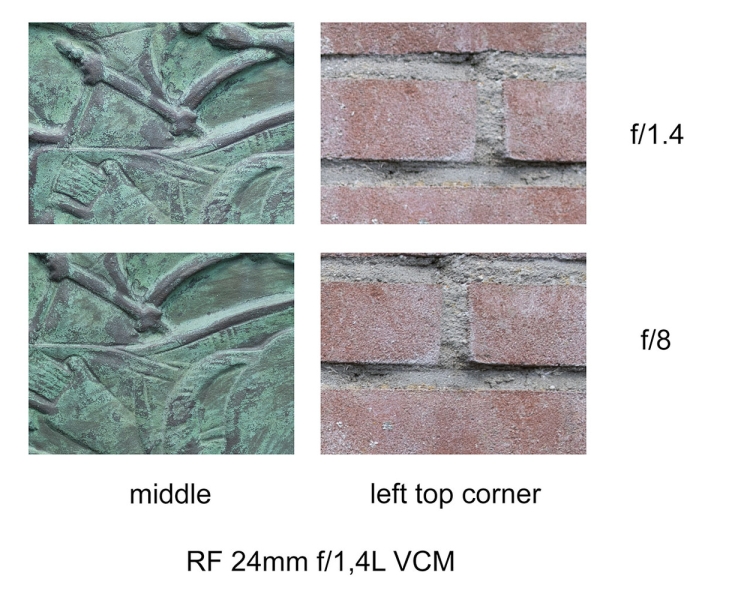
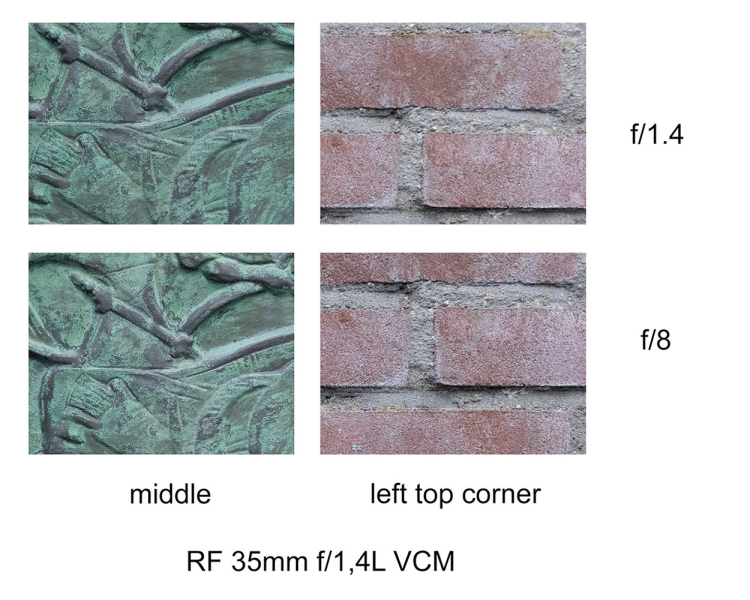
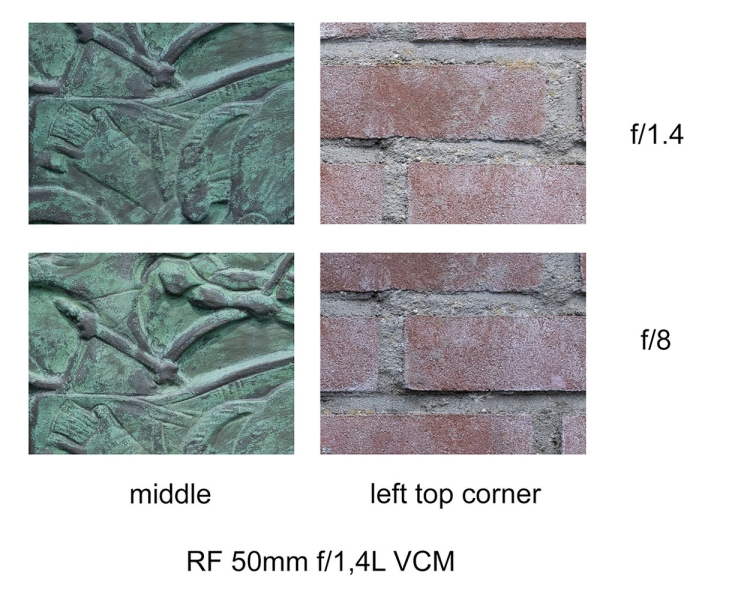
Looking at the sharpness of the center and right top corner reveals good detail, only slightly soft in the corner at f/1.4. Closing the aperture to f/8 improves sharpness, as expected. The examples were captured with in-camera lens correction enabled. It shows how the lens correction doesn’t seem to degrade sharpness noticeably, if at all.
Bokeh and Flares
These three VCM primes all offer a maximum aperture of f/1.4. This allows a lot of light through the lens, which is ideal in low-light conditions without needing to raise the ISO too much. This is especially convenient for video when there is no opportunity to change the shutter speed. It also allows for a shallow depth of field and a pleasing bokeh.
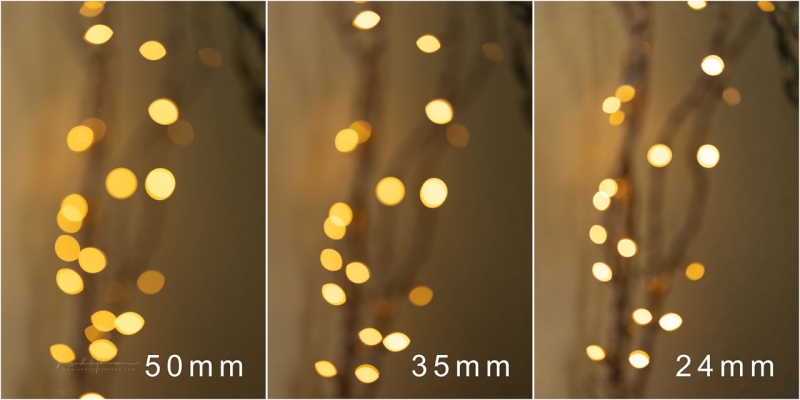
The distance to the lamps is decreased with shorter focal lengths. Focus was set to infinity.
The size of bokeh balls depends on both distance and focal length. The shorter the focal length, the smaller the balls appear. However, in all three cases the balls look smooth, round, and don’t appear to have any onion rings. Towards the corners, the balls take on a cat-eye shape.
I used the lenses during a wedding under harsh sunlight, without the lens hood. Although this doesn’t show the full extent of potential flares, it reflects a real-world shooting scenario. I didn’t experience any significant flaring.

There was a sun just outside the frame. No noticeable flares occurred, even though I didn’t use a lens hood. (Canon EOS R5 Mark II with RF 35mm f/1.4L VCM at f/4)
Autofocus
The combination of the Nano USM and VCM autofocus systems allows for silent and extremely fast performance. The image is focused the second you activate the autofocus. With servo AF, the subject stays in focus.

Focus was achieved instantly—just as it’s supposed to be. (Canon EOS R5 Mark II with RF 35mm f/1.4L VCM at f/5.6)
The lens doesn’t extend during focusing, which is a blessing, as the autofocus is entirely by wire. Without power, it isn’t possible to change focus manually or otherwise.
I checked for any focus breathing and didn’t notice any. I’m not sure if this is due to the focusing system of the lens itself or digital correction in the camera.
Real-World Use
I used these three VCM prime lenses mainly for an engagement shoot and a wedding. I think these lenses are best suited for that kind of photography. My experience is mostly based on that use.

Canon EOS R5 with RF 50mm f/1.4L VCM at f/7.1
The compact size and reduced weight were very convenient compared to the lenses I usually use—especially during a long day at a wedding. However, the similar size and appearance made it difficult to grab the right lens by touch. I was forced to check the focal length every time. It’s not a real issue, but something to be aware of.
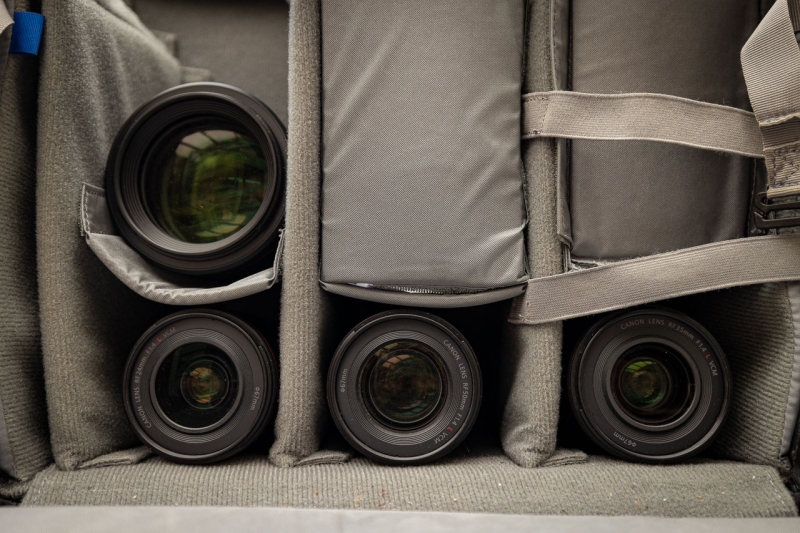
You can’t tell the difference on sight. But you can recognize the RF 85mm f/1.2L USM on sight.
At first glance, the aperture ring is a nice addition. I would have liked a button to activate clicks, making it easier to keep the aperture at the same setting, and offering some feedback when changing aperture.
However, to use the aperture ring for photography, the latest cameras are required. I used a Canon EOS R5 and a Canon EOS R5 Mark II for this wedding. The aperture ring worked on the latter, but not on the former. To keep things simple, I set the aperture ring set to auto with the iris-lock button. This way, it behaved similarly on both cameras.
Night Sky Photography
The RF 24mm f/1.4L VCM has potential for night sky photography. However, I’ve had bad experiences with lenses that rely on in-camera lens correction. Especially when stacking is involved, lens correction can lead to serious banding issues. You could disable lens correction for this purpose, but the vignetting and distortion are extreme with this lens.

Stacking 70 individual shots with the RF 24mm f/1.4L VCM didn’t produce banding, even though lens correction was done for each shot.
I expected banding to occur when stacking multiple images for a short star trail. Surprisingly, banding was almost completely absent. I did find some mixed results when stacking images in StarStaX, but Photoshop posed no problems.
Conclusion
To be honest, I’m not a fan of lenses that rely heavily on lens correction. I prefer lenses that have an optical formula that reduces lens errors as much as possible. This usually means larger and heavier lenses, which I accept.
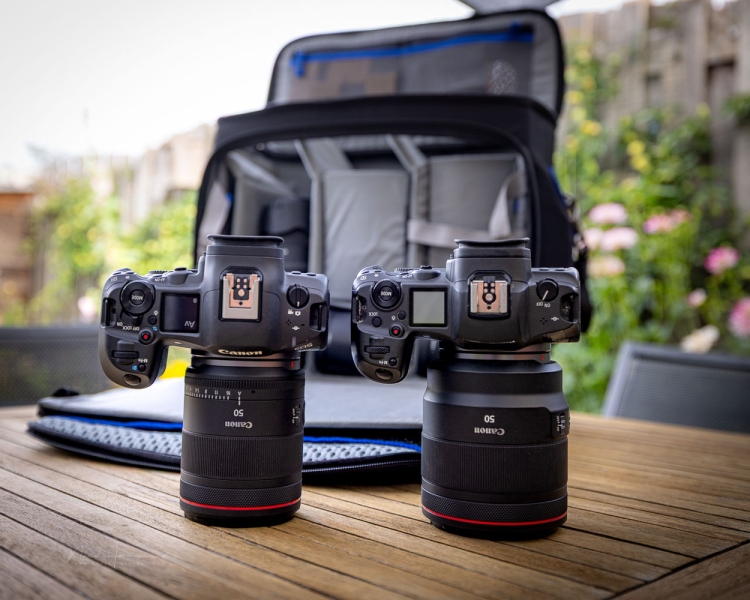
This is the difference between the RF 50mm f/1.4L VCM on the left, and the RF 50mm f/1.2L USM on the right. Which one do you prefer?
Canon hasn’t released an RF 24mm or RF 35mm with large apertures yet, except in this VCM series. I like the compact size in combination with the f/1.4 aperture. I also like having an aperture ring. But I don’t like the mandatory lens correction, especially with the 24mm, which I would like to use for night sky photography and stacking.

Canon EOS R5 Mark II with RF 24mm f/1.4L VCM at f/5.6. It’s an HDR from three different exposures.
To my surprise, even with lens correction applied, the images are perfectly usable for the purpose I have in mind. So I’ve had to change my opinion on that. These lenses are worth considering, especially at their reasonable price point.
However, I do have a problem with the aperture ring and how it’s implemented. I would have preferred the option to enable clicks. But more than that, I don’t understand why the aperture ring doesn’t work for still photography on cameras released before 2025. It works for video, without exceptions, so why not for photos?
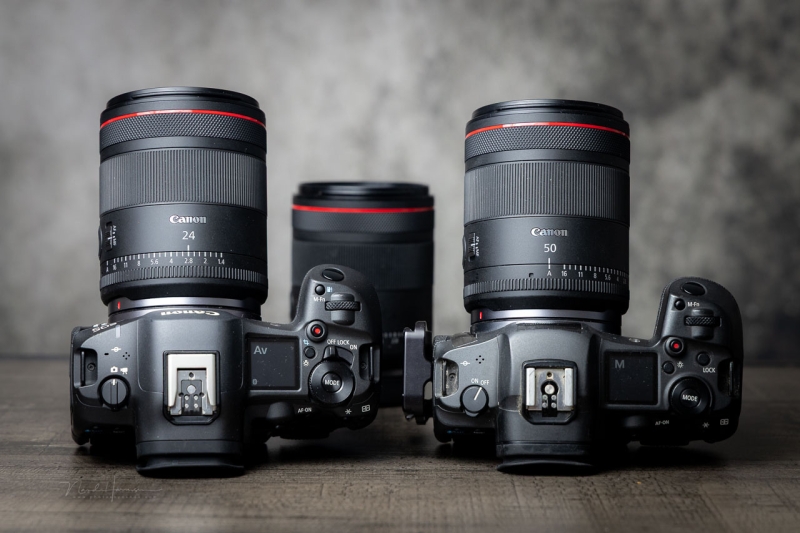
Why the aperture ring doesn’t work for stills on older cameras is strange. Or is it?
There is always the option to use the auto setting and control the aperture with the scroll wheel. But if I have an aperture ring, I want to use it. This is a significant drawback for me. It makes me hesitant to buy one of these lenses. But if you’re okay with it, these VCM lenses are worth the money.
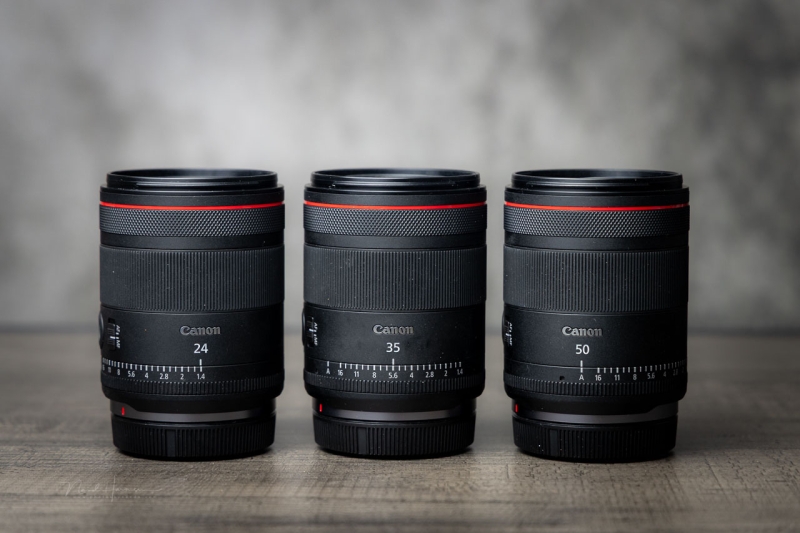
What I Like
-
Small size and light weight
-
Similar size and weight for lens changes while using on gimbal
-
No notable focus breathing
-
Aperture ring without clicks (for video)
-
Fast, silent, and reliable autofocus
-
Programmable button
-
Good image quality after lens correction
-
Minimal banding when stacking (depends on software)
-
Weather-sealed
-
Reasonable price
What I Dislike
-
The aperture ring doesn’t work for stills on older cameras
-
Mandatory in-camera lens correction
-
No possibility to activate the clicks on the aperture ring
-
Hard to distinguish by touch due to identical size and weight (debatable)
-
No lens stabilization (debatable)
-

Canon EOS R5 with RF 50mm f/1.4L VCM at f/5
-

Canon EOS R5 mark II with RF 50mm f/1.4L VCM at f/1.8
-

Canon EOS R5 mark II with RF 24mm f/1.4L VCM at f/5
-

Canon EOS R5 mark II with RF 24mm f/1.4L VCM at f/1.4
-

Canon EOS R5 mark II with RF 24mm f/1.4L VCM at f/8
-

Canon EOS R5 mark II with RF 50mm f/1.4L VCM at f/1,6
